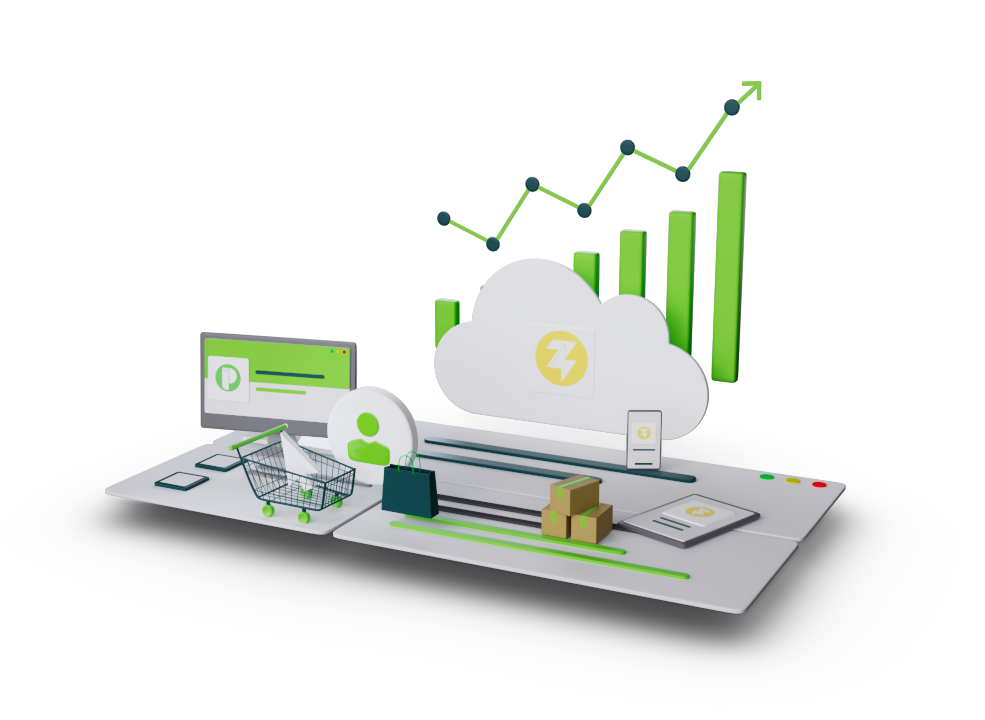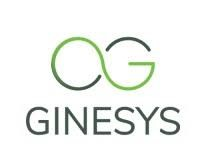How to Improve Revenue Opportunities with Your POS System
Point‑of‑sale (POS) software plays a central, strategic role in today’s retail industry—running any store without a modern POS is nearly impossible. Yet the true value of a POS goes far beyond simple sales processing: it can be a powerful engine for growth, efficiency, customer engagement, and profit enhancement.
As retail becomes ever more competitive, retailers must ask whether their POS system truly helps them maximize revenue opportunities, rather than just facilitating payments. To realize this potential, a POS must deliver advanced functionalities which overlap CRM, inventory, marketing automation, analytics, loyalty, omnichannel integration, dynamic pricing, and more.
Here's an updated, deeply expanded guide to all the critical features, best practices, technology trends, and strategic approaches that your POS should embody to unlock its full revenue-driving capabilities.
1. Integration as the Core: POS as a Retail Hub
a. From Payment Terminal to Operational Nerve Center
Although POS systems traditionally processed payments, modern solutions have evolved into comprehensive operational hubs. When fully integrated, a POS connects across the entire retail ecosystem: loyalty platforms, CRM, marketing automation, ERP, e‑commerce, accounting, vendor portals, and even mobile or kiosks.
This integrated hub ensures real‑time data flow and seamless coordination across functions—detaching each module from manual syncing reduces errors, saves time, and leads to smarter decision-making.

b. CRM & Loyalty Program Integration
A POS that can feed customer purchase data into a CRM or loyalty engine empowers personalized promotions, segmented offers, birthday emails, and targeted campaigns. It enables retailers to build long-term customer relationships, increase lifetime value, and reduce churn.
Ginesys, for example, integrates with platforms like OptCulture, enabling automated marketing campaigns, coupons, e‑receipts, and loyalty points redemption—all orchestrated from POS‑captured data
c. ERP and Inventory Synchronization
Integration with ERP modules ensures that every sale or return automatically updates inventory levels, purchase orders, financial ledgers, and supplier workflows. As a result, SKU availability is accurate across channels, purchasing decisions become data-driven, and administrative overhead shrinks.
Ginesys ERP tightly binds POS to its modules for inventory management, multi-location operations, purchase order flows, and analytics, creating a unified solution under one ecosystem.

Unlock higher sales and smoother operations with Ginesys POS – your partner in smarter retail management.
2. Data Collection & Analytics: Turning Information into Revenue
a. Deep Customer Insights
POS systems track who bought what, when, and how frequently—these customer profiles are gold. When analyzed, such data reveals buying patterns, seasonal trends, affinity groups, and basket composition. Retailers can then craft personalized campaigns, cross-sell complementary products, upsell higher-margin alternatives, or encourage repeat visits.
Without this insight, decision-making is guesswork—leading to poor decisions, lost opportunities, and unnecessary discounts. Hence POS systems lacking robust data-driven analytics handicap retail growth.
b. Advanced Reporting Dashboards & KPIs
Modern POS platforms provide customizable dashboards, with real-time metrics such as daily sales, velocity of SKUs, missed sales opportunities (e.g. out-of-stock), top-performing employees or stores, and promotional lift. These insights support:
- Performance benchmarking across stores
- Fast identification of slow‑moving inventory
- Evaluating promotional ROI
- Staff productivity tracking
Sources like ElectronicPayments.com highlight the importance of automated report generation, integration with accounting software, and detailed behavior analytics for smarter operations.
c. Predictive Forecasting & Machine Learning
Some POS/ERP systems now embed AI-powered forecasting, using machine learning algorithms to predict demand, recommend replenishment quantities, and flag anomalies. For instance, a reinforcement‑learning pricing framework can dynamically adjust prices based on consumer demand patterns and elasticity—maximizing revenue per SKU over time.
Ginesys also offers forecasting tools integrated into its inventory module, helping retailers anticipate peak SKUs, seasonal surges, and promotional demand cycles.
3. Inventory Management that Drives Sales
a. Real-Time Inventory and Multi-Store Visibility
At the heart of a modern POS should be real-time inventory tracking. Every sale, return, or transfer updates stock levels instantly—eliminating discrepancies across tills and backend systems. Multi-store or warehouse visibility ensures stock availability can be checked and transferred or fulfilled proactively.
This functionality is foundational, as highlighted in multiple industry guides: real-time inventory, auto replenishment, and bulk-import capabilities are core POS essentials.
b. Automated Purchase Orders & Stock Replenishment
Next-gen POS systems can trigger automated purchase orders when stock dips below threshold. This automation reduces stockouts, improves cash flow, and ensures the proper product mix is maintained—critical for revenue.
For example, Ginesys POS automates purchase order generation tied to inventory thresholds, reducing manual decision-making and preventing lost sales due to inventory shortages.
c. Analytics on SKU Performance & Product Mix
Effective POS analytics help retailers analyze best sellers vs slow movers, identify seasonal trends, and optimize product assortment. Insights like “this variant never sells” or “these 3 items sell best together” allow data-driven assortment decisions, potentially freeing capital and increasing revenue-per-square-foot.

4. Omnichannel Capabilities: Seamless Integration Across all Sales
a. Brick-and-Mortar, E‑Commerce, Mobile & Kiosk Unity
Retailers now operate across multiple channels—physical stores, e‑commerce websites, marketplaces, mobile apps, and kiosks. A truly effective POS system must integrate all these channels, syncing inventory, customer data, and order fulfillment rules.
Without omnichannel integration, stock may appear available online but not in-store, leading to customer frustration. Sales, promotions, and loyalty status must carry across channels for consistency.
b. Unified Customer Experience
Channel-agnostic loyalty programs and CRM ensure a customer visiting via mobile gets the same benefits as one in-store. POS should orchestrate loyalty points, coupons, personalized discounts, and promotions consistently across each touchpoint.
Ginesys POS supports multi-channel retail, combining in-store, e‑commerce, and even third-party fulfillment—creating a unified experience across platforms.
c. Click‑and‑Collect, Endless Aisle, Ship‑from‑Store
Modern POS solutions enable flexible fulfillment options like click‑and‑collect, “reserve in-store” or ship-from-store. This flexibility enhances customer satisfaction and increases sales opportunities by leveraging inventory across channels and locations.

Boost revenue and streamline operations with the POS system built for growth.
5. Emerging Technology Trends Elevating Revenue Potential
a. Mobile & Virtual POS (vPOS)
Mobile POS (mPOS) allows associates to check out customers anywhere—on the floor, at pop-up kiosks, or during events—reducing queue times and boosting impulse purchases. Virtual POS (cloud-based, app-driven interfaces) offer flexibility and lower infrastructural costs
b. Contactless Payments, Wallets & Digital Wallet Integration
Support for digital wallets and contactless payments (Apple Pay, Google Pay, NFC tap) is vital. A modern POS must accept multiple payment options swiftly and securely to reduce friction and appeal to modern consumers.
c. Self‑Checkout & Automated Systems
Systems like self-checkout kiosks or cashier-less checkouts streamline the purchase process and reduce labor costs. These models increase throughput and alleviate checkout congestion, boosting overall conversion rates.
d. Voice & AI Assistants at PO
Forward-thinking retailers are exploring voice user interfaces and digital assistants to power customer interactions, guide basket composition, and answer queries at checkout—improving service and efficiency.
6. Operational Efficiency & Staff Management
a. Employee Management & Permissions
Modern POS platforms include staff management modules—tracking shifts, timecards, sales performance, commissions, and POS access permissions. This visibility helps reward top performers, identify training needs, and restrict sensitive functions to authorized roles.
b.User Interface & Training Efficiency
A clean, intuitive UI reduces onboarding time, minimizes transaction errors, and lets staff process sales swiftly. Configurable mount layouts, short‑cuts, touchscreen optimization, and visually guided workflows are now standard in leading POS systems
c.Transparent & Scalable Pricing
POS providers with clear, scalable pricing (per device or per location) without hidden fees enable predictable budgeting. Retailers should evaluate transaction fees, hardware costs, support plans, and whether key modules (inventory, loyalty, admin) are included or add-ons.
7. Security, Compliance & Fraud Prevention
a. PCI DSS Compliance & Encryption
Any POS must support end-to-end encryption, tokenization, and compliance with payment security standards (PCI DSS). Secure transactions build customer trust and prevent data breaches.
b. User Authentication & Fraud Monitoring
Robust user authentication (e.g. biometric login, PIN, role-based access) plus real‑time monitoring of suspicious transactions or returns helps reduce internal fraud and strengthens profitability
c. Regulatory Features
In certain retail verticals, POS systems must support features like age verification for alcohol or regulated items, automatic tax calculations per region, and audit reporting—functionality that ensures legal compliance without manual effort.
8. Why Ginesys POS Stands Out as a Revenue Catalyser
a. Comprehensive Feature Suite
Ginesys POS isn’t just a payment terminal—it is part of a broader ERP eco-system that includes billing, inventory control, forecasting, loyalty, multi‑channel management, CRM, purchase & returns management, and analytics.
b. Cloud‑Native with AI & BI Integration
Running on cloud infrastructure, Ginesys offers pre-built business intelligence dashboards, AI‑powered forecasting, and regular feature updates that keep retailers ahead of the competition.
c. Indian‑Retailer Focused
With strong presence in India and clients across lifestyle, supermarkets, textiles, and large-format retail (for example Vmart, Manyavar, Mufti), Ginesys is tailored to local market needs—supporting GST, multi‑language, region‑specific taxation, and Indian supply chains.
d.Integrated Loyalty & Marketing via Partners
Through integrations with platforms like OptCulture, Ginesys helps drive customer engagement via automated e‑receipts, coupon campaigns, loyalty redemption, personalized offers, and cross-channel marketing—all driven by POS data.
9. Implementation & Best Practices to Maximize Revenue Impact
a. Conduct a Feature Gap Analysis
Start with mapping which revenue-driving features your current POS lacks: e‑commerce sync, dynamic pricing, mobile checkout, reporting dashboards, or loyalty integration. Knowing these gaps helps define the ideal upgrade scope.
b. Train Staff & Rollout Phased Adoption
Even world-class POS systems fail when staff aren't trained. Provide phased rollout, hands‑on training, curated SOPs, and trainer incentives. Encouraging frontline associates to recommend upsell prompts or loyalty offers can boost adoption.
c. Monitor KPIs Continuously
Track metrics like per-SKU revenue lift, average basket size, conversion rates, loyalty program enrolment, stockouts avoided, and queue time per transaction. Use dashboards or automated reports to compare week-over-week performance and assess ROI.
d. Periodic Review & Optimization
Retail dynamics evolve—new SKUs, seasonal trends, promotions, or channels emerge. Conduct periodic feature reviews (quarterly or annually) to leverage new POS capabilities—AI pricing, self-checkout pods, new integrations, etc.

Unlock your store’s full revenue potential with Ginesys POS—request your personalized demo today.
The POS as Your Revenue Engine
In the ever-evolving retail landscape, a POS that merely processes payments is no longer sufficient. To truly drive growth, retailers need POS systems that are:
- Fully integrated across loyalty, CRM, ERP, e‑commerce, inventory, and marketing
- Capable of data collection, advanced analytics, and forecasting
- Equipped with automated replenishment, multi‑channel fulfillment, and dynamic pricing
- Secure, mobile-enabled, user‑friendly, and tailored to staff permissions, scaling, and local compliance
Providers like Ginesys offer this ecosystem — blending POS with ERP and business intelligence, along with local retail expertise. By leveraging these capabilities and following best practices, retailers can significantly increase revenue, conversion rates, customer lifetime value, and operational efficiency.
Take the next step to grow your business—contact us today to discover how Ginesys can unlock your store’s true potential.

